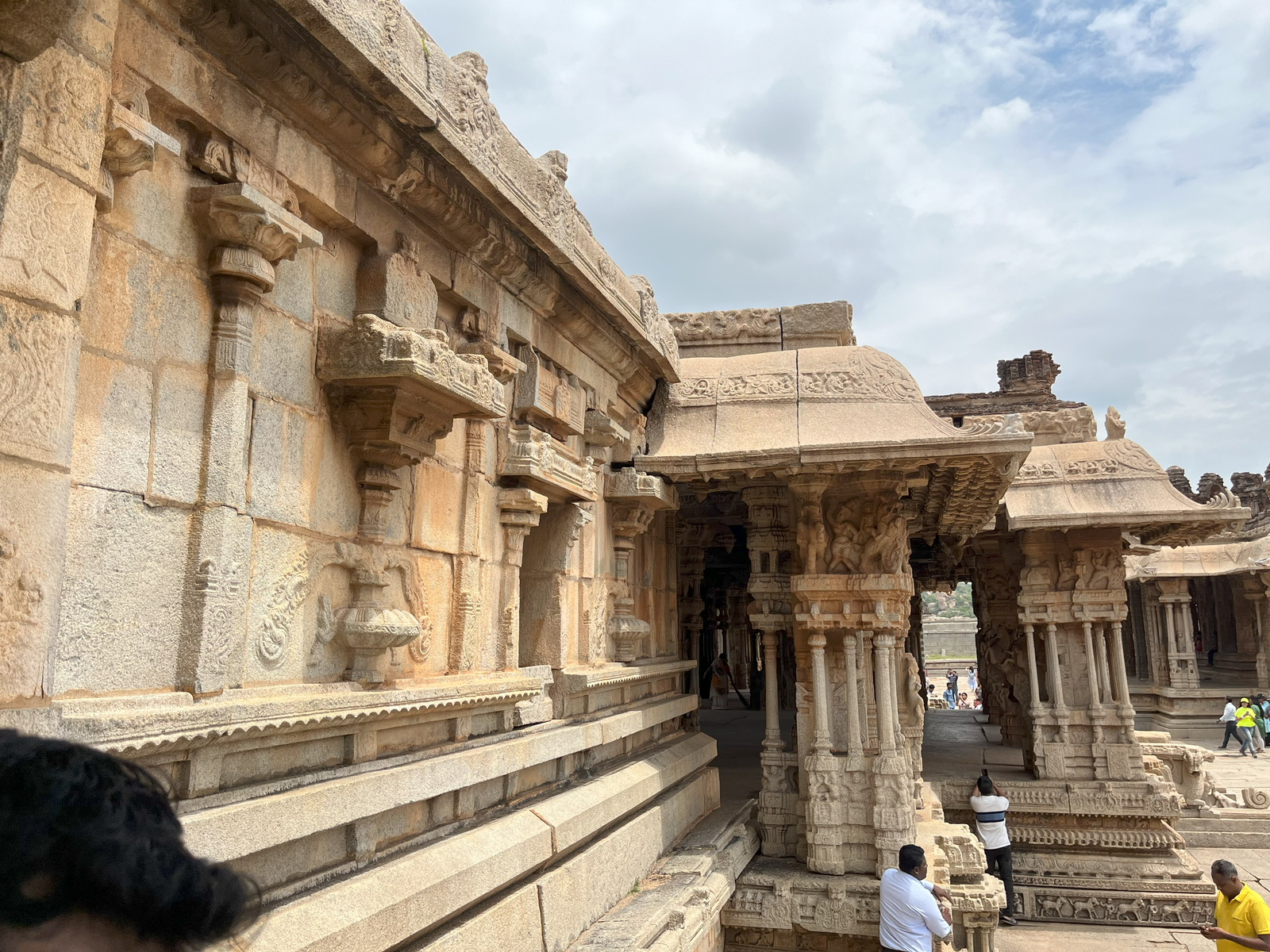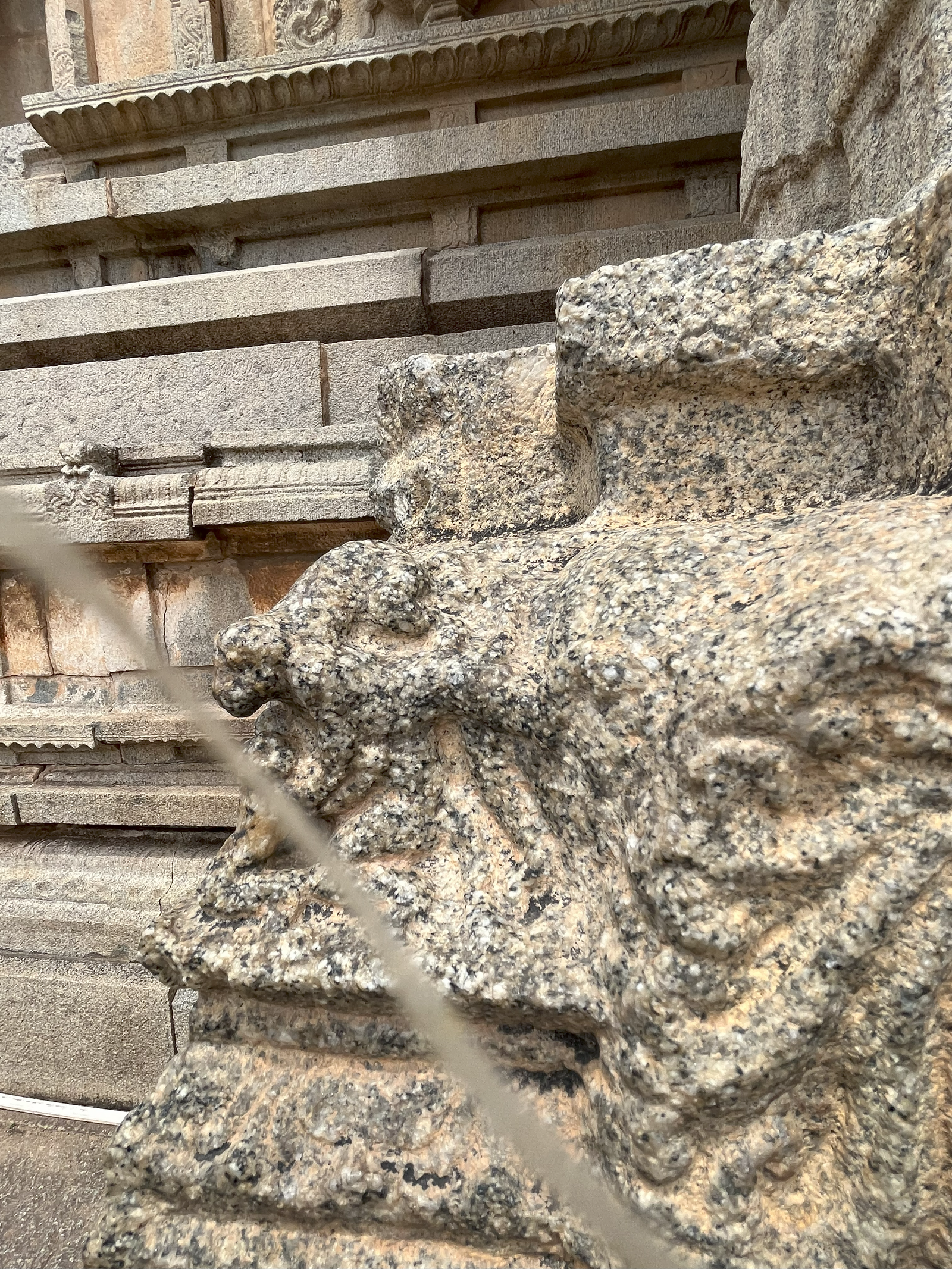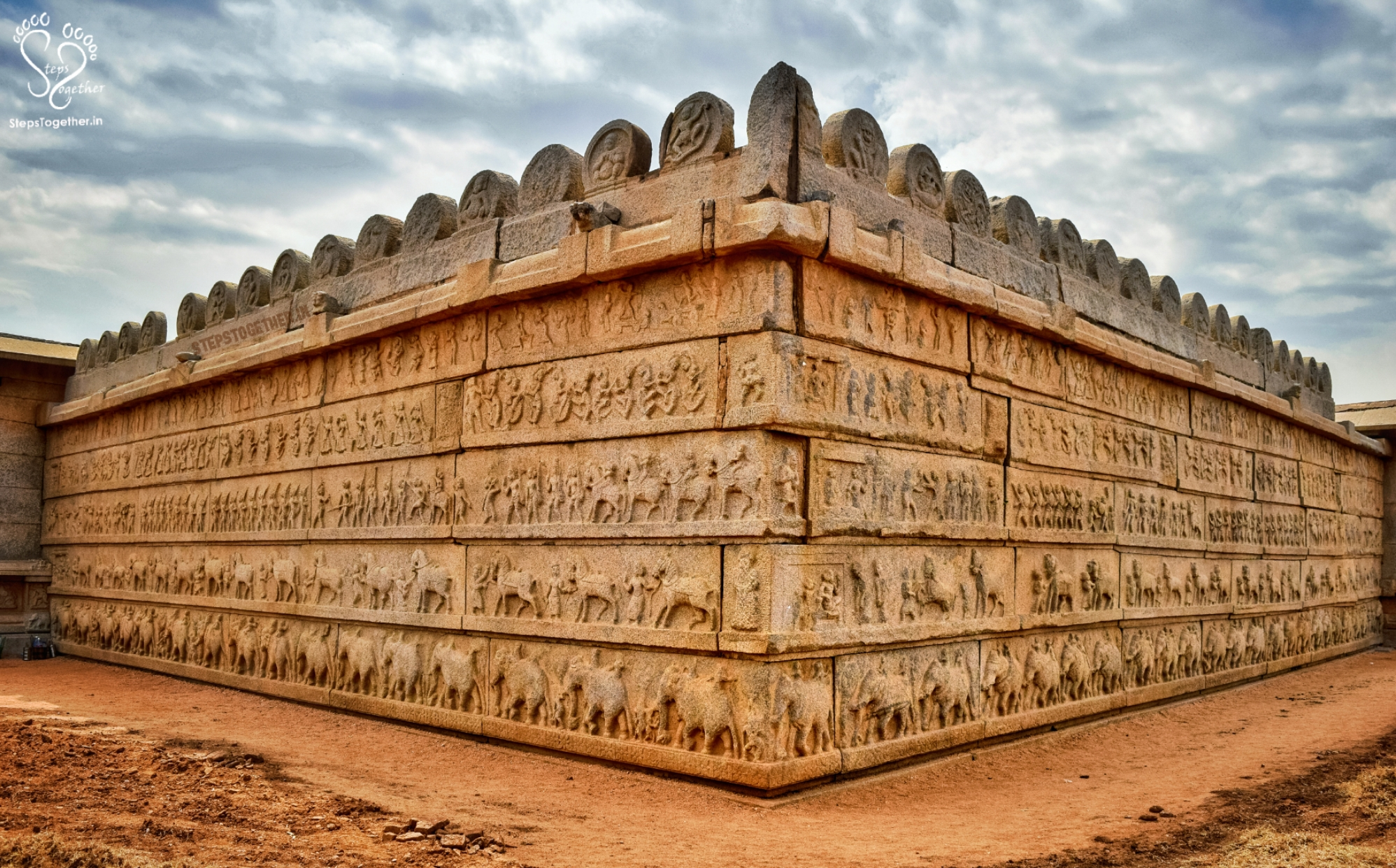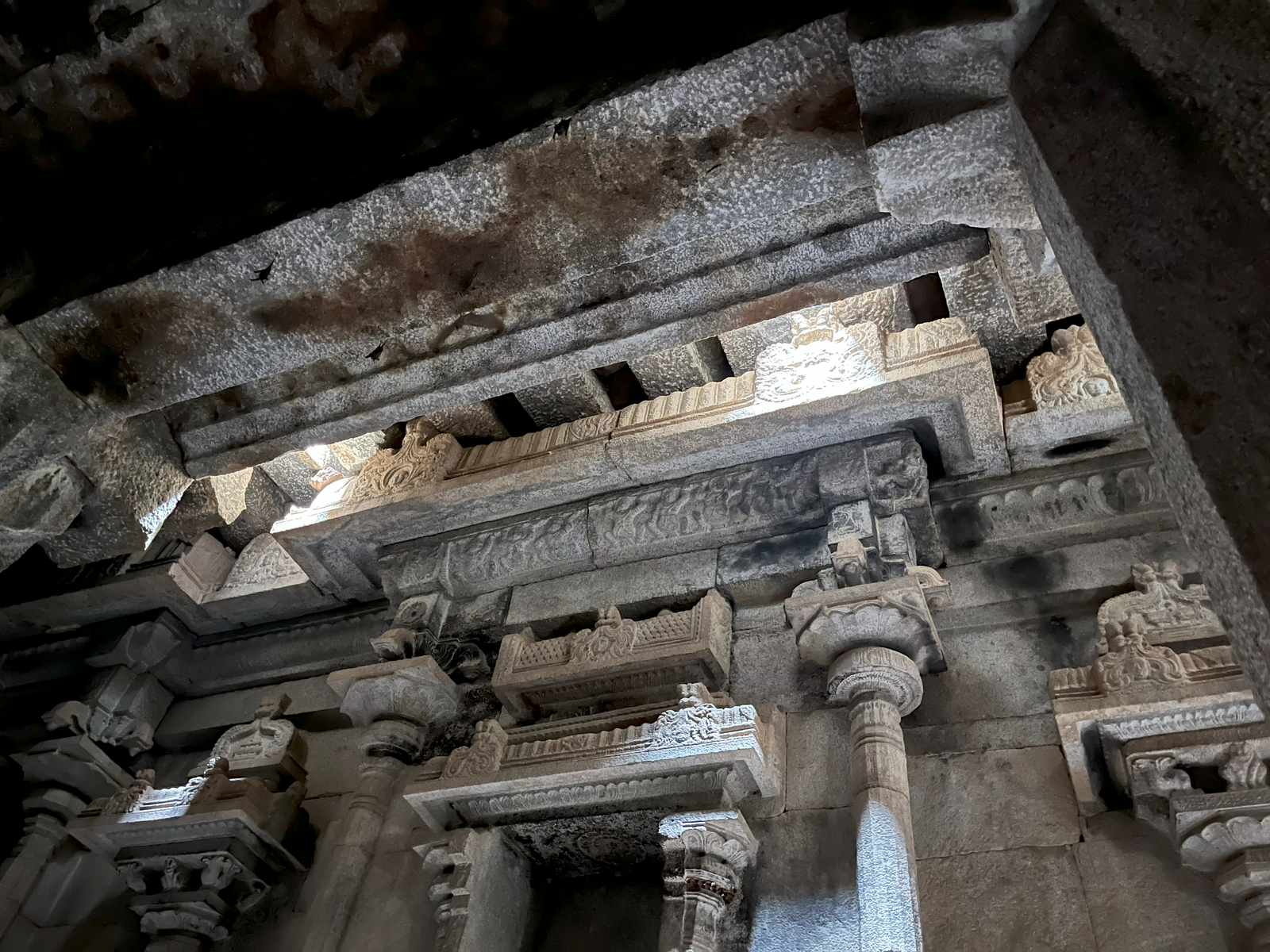Musical Pillars
Musical Pillars in Hampi A standout amongst the most appealing structures is the Vittala Temple. This antiquated temple is famous for its marvellous architecture. It is also known for another extraordinary architectural marvel – 56 melodic columns or the musical pillars. These pillars create melodic sounds when tapped delicately. The most intriguing thing is that the columns are constructed using stones. The melodic mainstays of Vittala Temple are also called SAREGAMA pillars.

Architect tactics of those times

Hampi is scattered with ruins of giant monuments of the Vijayanagar Empire which were built with granite rock stones that existed in abundance in the town. There is an interesting tactic that the artists of those times followed to cut these gigantic stones and changed them into bits of art pieces in that old age. When a rock was cut, a sequence of holes was made on the stone’s surface. Then the dry wooden pieces were pegged into the stone. Water was poured over the pegs such that they are soaked well in it. As the wooden pegs are completely doused with the water, their size expands, and the small pegs cause the stone to split and break apart due to the mounting pressure inside.
4-in-1 sculpture
In the heart of Hampi’s architectural splendor lies a unique and captivating sculpture that embodies the ingenious creativity of the Vijayanagara artisans. Known as the “4-in-1 sculpture,” this remarkable piece of art seamlessly integrates the forms of a mother and baby monkey, a frog, a snake, and a lion into a single entity. Situated within the sprawling complex of the Vittala Temple, this sculpture is a testament to the imaginative skill and profound symbolism that characterizes Vijayanagara art.


The sculpture’s multifaceted design allows viewers to experience different animals from varying perspectives, making it a visual puzzle that delights and intrigues. From one angle, the protective embrace of a mother monkey holding her baby comes into view, symbolizing maternal love and care. A shift in perspective reveals a frog, an emblem of fertility and water in Hindu mythology, while another angle brings forth the sinuous form of a snake, representing rebirth and death. Lastly, the majestic lion, a symbol of strength and royalty, completes the ensemble, asserting the power and grandeur of the Vijayanagara Empire.
Relics of Ramayana

Hampi is also famous for the Hazara Ram temple. The temple has gained popularity because of the presence of historical objects and fossils that are claimed to be present at the time of Ram and Krishna’s era. The entire outer walls of the temple are carved and ornamented with the antique objects that narrate the Ramayana, a holy book that delineate the life of Lord Rama. It is claimed that the fossils and antique objects that are present in this temple are the rarest ones found in the whole of India. We bet did not know this fact about Hampi.
The Inverted Tower
There is a staircase behind the leading sanctum of the temple that heads towards the back exit of the temple. A dark chamber with a small opening in the wall is present before the exit on the right side. At the point when the sun beams go through the opening and fall on the western wall, the inverted main tower is visible as the shadow in the image.
Underground Shiva Temple
For some curious reasons, this temple dedicated for Lord Siva was built many meters below the ground level. For this reason, almost all the time the sanctum and the core parts of the temple are under water, restricting entry to the inner areas, is partially submerged and offers a mystic exploration experience. Its submerged condition is believed to be a result of the ingenious irrigation and canal systems of Hampi. he temple has remained buried for over four hundred years before it was discovered in the 1980’s decade.

Underground Pradakshina Path

The Virupaksha Temple houses an intriguing underground pradakshina path, ingeniously designed for devout followers to undertake their spiritual walk in seclusion. This path stands out not just for its serene ambiance but also for its architectural brilliance, incorporating natural light sources and water reflections to illuminate the way. Additionally, it features an advanced ventilation system, ensuring a comfortable passage. The path is adorned with intricately carved pillars, some depicting frogs – a symbol of fertility and prosperity, making this underground journey a blend of spiritual significance and ancient engineering marvel.



